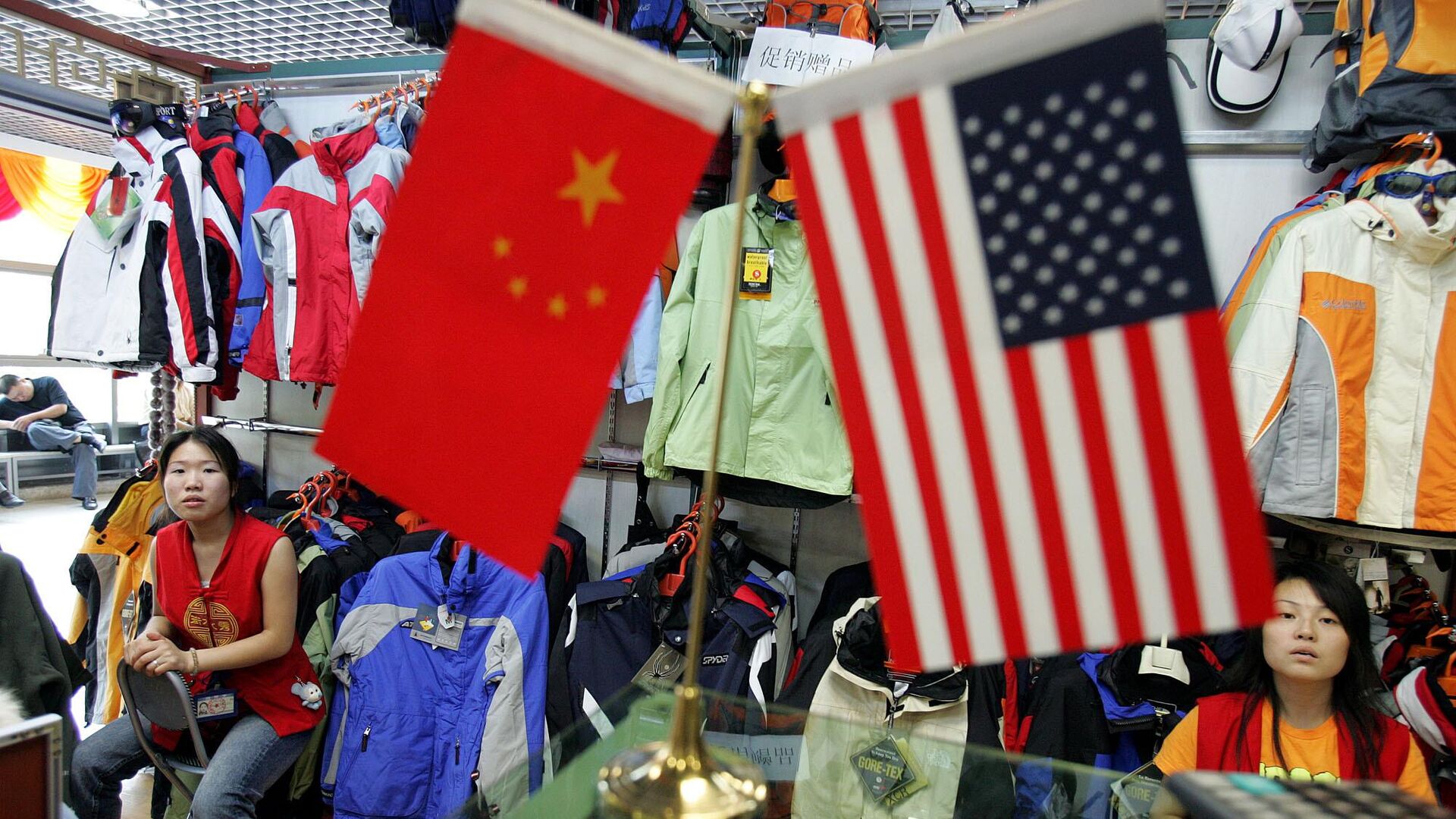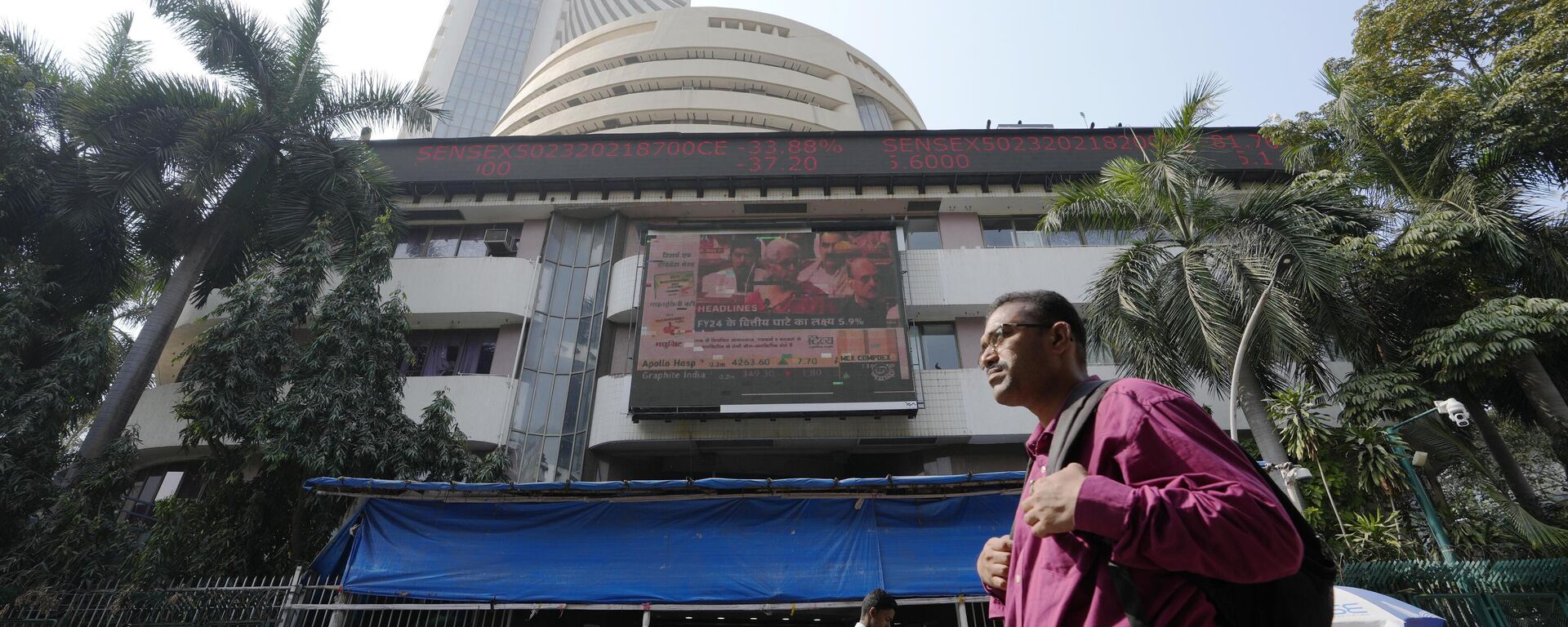https://sputniknews.in/20250408/where-does-india-stand-in-us-china-tariff-wars-8961935.html
Where Does India Stand in US-China Tariff Wars?
Where Does India Stand in US-China Tariff Wars?
Sputnik India
A trade war between the US and China, two of the world's largest economies, after the two nations imposed 34 percent tariffs on each other's goods, has sent... 08.04.2025, Sputnik India
2025-04-08T20:53+0530
2025-04-08T20:53+0530
2025-04-08T20:53+0530
business & economy
donald trump
india
us
china
european union (eu)
delhi
new delhi
washington d.c.
beijing
https://cdn1.img.sputniknews.in/img/07e9/04/08/8962708_0:0:2000:1125_1920x0_80_0_0_c82448166477f278add48f232561a81c.jpg
The US-China trade war presents both risks and opportunities for India, experts have said.While global instability may cut down demand, and disrupt and divert global trade and supply chain, it can open doors for Indian exporters, especially in electronics, agro-products, and related sectors, to tap into markets looking to reduce dependence on China, says Muhammad Rehan Rajput, a senior geopolitical analyst with IIRIS, one of India's leading risk consulting companies.India will face a setback in exporting gems & jewellery, yarn, readymade clothes, cashews, oil, basmati rice, leather-based products, and engineering goods due to the tariff war unleashed by US President Donald Trump, Lieutenant Colonel (Retd) J.S. Sodhi, reckons.This will vastly affect the Indian economy as the US is its second-biggest trading partner. A glimpse of the effect on the Indian economy was visible in the stock market crash earlier this week when Indian investors lost over $160 billion, he added.However, economist Dr. Prerna Prabhakar believes that the US-China friction may come as a boon to the Indian economy.Key players like China, Bangladesh, and Vietnam have recently been subjected to higher tariffs by major importing countries such as the US and the EU. This has created a competitive void that Indian exporters are well-positioned to fill, Prabhakar, who serves as an associate fellow at the New Delhi-based financial think tank Centre for Social and Economic Progress (CSEP), noted.While the US-China trade war presents an opportunity for India to expand exports to the US for some categories, it also carries certain risks. With existing oversupply in China's manufacturing sector, there is a strong possibility that Chinese exporters may divert their goods to alternative markets such as Germany, the Netherlands, the UAE, and the UK—countries that are also key destinations for India's exports, she underscored.This redirection of Chinese exports could intensify competition in these markets, potentially undermining India's export ambitions, particularly in high-growth sectors like electronics, machinery and chemicals, which constitute a significant share of India's export basket, Prabhakar elaborated.
https://sputniknews.in/20250408/indian-stock-market-gains-and-shows-signs-of-recovery-following-trumps-tariffs---media-8959925.html
india
us
china
delhi
new delhi
washington d.c.
beijing
Sputnik India
feedback.hindi@sputniknews.com
+74956456601
MIA „Rossiya Segodnya“
2025
Pawan Atri
https://cdn1.img.sputniknews.in/img/07e6/0c/13/139630_147:0:831:684_100x100_80_0_0_8fa2b25903e7787fe6a2698552c167df.png
Pawan Atri
https://cdn1.img.sputniknews.in/img/07e6/0c/13/139630_147:0:831:684_100x100_80_0_0_8fa2b25903e7787fe6a2698552c167df.png
News
en_IN
Sputnik India
feedback.hindi@sputniknews.com
+74956456601
MIA „Rossiya Segodnya“
Sputnik India
feedback.hindi@sputniknews.com
+74956456601
MIA „Rossiya Segodnya“
Pawan Atri
https://cdn1.img.sputniknews.in/img/07e6/0c/13/139630_147:0:831:684_100x100_80_0_0_8fa2b25903e7787fe6a2698552c167df.png
donald trump, india, us, china, european union (eu), delhi, new delhi, washington d.c., beijing, trade
donald trump, india, us, china, european union (eu), delhi, new delhi, washington d.c., beijing, trade
Where Does India Stand in US-China Tariff Wars?
A trade war between the US and China, two of the world's largest economies, after the two nations imposed 34 percent tariffs on each other's goods, has sent shockwaves globally.
The US-China trade war presents both risks and opportunities for India, experts have said.
While global instability may cut down demand, and disrupt and divert global trade and supply chain, it can open doors for Indian exporters, especially in electronics, agro-products, and related sectors, to tap into markets looking to reduce dependence on China, says Muhammad Rehan Rajput, a senior geopolitical analyst with IIRIS, one of India's leading risk consulting companies.
"As tensions between Washington and Beijing mount, India's electronics, pharmaceuticals, textiles, and auto components sectors are most likely to face ripple effects due to global supply chain disruptions. Furthermore, India's IT and software services exports may feel indirect pressure as the US or Chinese firms may cut back on outsourcing amid economic uncertainty," Rajput told Sputnik India.
India will face a setback in exporting gems & jewellery, yarn, readymade clothes, cashews, oil, basmati rice, leather-based products, and engineering goods due to the tariff war unleashed by US President Donald Trump, Lieutenant Colonel (Retd) J.S. Sodhi, reckons.
This will vastly affect the Indian economy as the US is its second-biggest trading partner. A glimpse of the effect on the Indian economy was visible in the
stock market crash earlier this week when Indian investors lost over $160 billion, he added.
However, economist Dr. Prerna Prabhakar believes that the US-China friction may come as a boon to the Indian economy.
Key players like China, Bangladesh, and Vietnam have recently been subjected to higher tariffs by major importing countries such as the US and the EU. This has created a competitive void that Indian exporters are well-positioned to fill, Prabhakar, who serves as an associate fellow at the New Delhi-based financial think tank Centre for Social and Economic Progress (CSEP), noted.
"Similarly, in the electronics sector, high tariffs on Chinese exports—particularly smartphones—have created an opening for India. As a former key exporter of electronics to the US, China's weakened position is encouraging global companies to diversify their manufacturing bases. India is likely to emerge as a preferred alternative. Global brands like Apple have already begun expanding their manufacturing footprint in the country," the think tanker emphasised.
While the US-China trade war presents an opportunity for India to expand exports to the US for some categories, it also carries certain risks. With existing oversupply in China's manufacturing sector, there is a strong possibility that Chinese
exporters may divert their goods to alternative markets such as Germany, the Netherlands, the UAE, and the UK—countries that are also key destinations for India's exports, she underscored.
This redirection of Chinese exports could intensify competition in these markets, potentially undermining India's export ambitions, particularly in high-growth sectors like electronics, machinery and chemicals, which constitute a significant share of India's export basket, Prabhakar elaborated.
"To capitalize on potential global supply chain realignments, India must enhance its manufacturing competitiveness by investing in R&D and innovation, strengthening domestic supply chain linkages, ensuring competitive input costs (including reducing import tariffs on critical intermediate goods), and proactively engaging in trade agreements with key partners such as the EU and the UK," the observer concluded.



